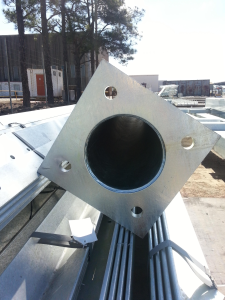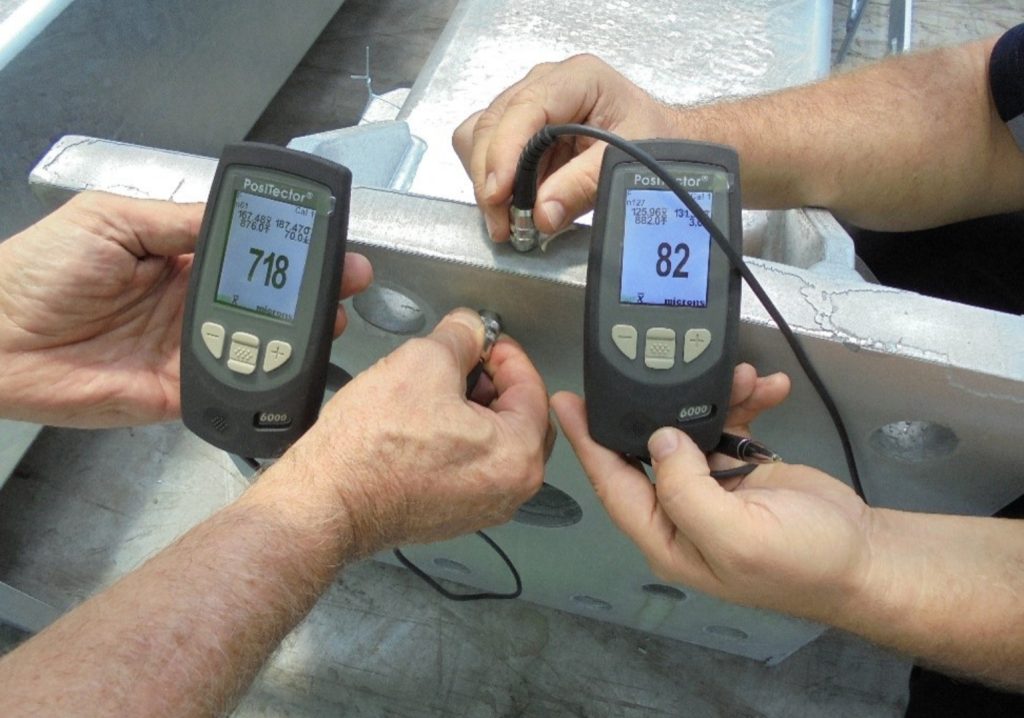While galvanizing is all about durability, missing these simple steps in the design and fabrication processes can cause aesthetic challenges.
Galvanizing is integral to steel’s durability, by protecting against corrosion, which otherwise erodes the steel lifecycle.
A single application of galvanized steel is often all that’s required to maximise a piece of steel’s lifespan, said Peter Golding, CEO of the Galvanizers Association of Australia (GAA).
“While galvanizing typically adds about 4–4.5 per cent to the initial carbon footprint of an average piece of steel, it can increase the life of a structure by 50-100 years, providing significant overall carbon savings,” he said.
All structural steel can be galvanized, with hot dip galvanized coatings renowned for their durability in atmospheric conditions.
For safety reasons, it’s widely known that design and fabrication of steel for galvanizing requires venting of hollow sections. This avoids explosions when the steel enters the molten zinc bath at around 450°C.
Yet it is less understood that following best practice design and fabrication principles is integral to the appearance of the finished product, while also providing superior quality and durability.
Getting design right
At the outset, it’s critical for engineers to understand the long-term corrosion protection a building or structure requires and design for the process accordingly.
“Corrosion protection, whether galvanizing or painting, should be designed upfront, not left for later,” Golding said. “There’s not much point putting on a coating where the design is such that the structure collects water or dirt, for example, leading to early failure.”
Structural steel fabrications are often designed with overlapping surfaces, particularly when welding is required.

But while easily galvanized, small gaps can develop – which essential cleaning solutions can access but the zinc cannot penetrate. As a result, the spent cleaning solutions can stain galvanized surfaces. Although they may not impact the corrosion protection, they can mar the aesthetic.
“By providing a 2.5 mm gap between overlapping surfaces, the zinc will be able to access those areas and fully coat the surface,” Golding said.
Including vent holes in the design also helps to ensure trapped moisture can escape during the process.
The appearance of galvanized coatings can also go awry in the absence of adequate draining configured into the design.
“When galvanized articles are removed from the molten bath, the excess needs to run off and drain away,” he said.
Without adequate draining, the zinc will harden on the galvanized surface within a matter of minutes and can lead to an unsightly surface.
Best practice design specifies that the larger the vent and drain holes, the easier it is for zinc to access the surface, leading to an attractive and durable finish.
“When the holes are too small, the draining process is very slow – which can lead to solidification on the surface, and therefore lumps and runs,” Golding said.
While these imperfections can often be cleaned off surfaces later, appearances will be diminished if the zinc finds its way into a corner.
Preventing fabrication fumbles
Many of the appearance problems related to fabrication are due to poor or unclean welds.
“However, if a fabricator follows good practice for welding, they will get good galvanizing outcomes,” Golding said.
“It’s a straightforward process if the material is well designed and well fabricated.”
In accordance with AS/NZS 2312 Part 2, the standard for best practice for design and durability of hot dip galvanizing, best practice principles for design and fabrication that ensure good quality appearance include smooth, good quality welds and no porosity.
“A good quality weld for structural steel will be suitable for galvanizing and the fabricator needs to remove the weld spatter post-welding,” he said.
Best practice also includes drilling holes, such as bolt holes, prior to galvanization to ensure bare spots don’t develop.
“Fabrication prior to galvanising will maximise durability,” Golding said. “So, welding, bolt holes and joining elements – even in modular construction where things are bolted together – will ensure all bolt holes, edges and corners are fully galvanized, resulting in maximum durability of the finished product.”
Other fabrication issues include when heat is used to cut through thicker steel – whether by laser, plasma or oxy – leading to a rougher surface.
These surfaces should be ground back prior to galvanizing so the thin oxide layer is removed, preventing the heat affected zone reducing the cohesion of the galvanized coating.
Touch marks are inevitable where a fabricated steel piece comes into contact with the jigs, wires or chains that guide it out of the molten bath. To avoid this outcome, best practice entails consideration of the hanging points that don’t compromise the appearance of significant surfaces.
Planning for success
Should these appearance issues arise in galvanized coatings, that does not indicate a failure to adhere to the galvanizing standard, AS/NZS 4680. Nonetheless, the best project outcomes, and customer satisfaction, is another matter.
Throughout the design and fabrication process, communication between the engineer, fabricator and galvanizer in the design or fabrication stage is essential for optimum results.
“If there is a complicated structure or a structure with particular requirements, for example, if it is 1000 kilometres from a city and might have elements that are difficult to maintain later, designing for the application, which in this case is reduced maintenance requirements, can be significantly advantageous for lifecycle and costing,” Golding said.
To ensure designers develop a keen understanding in these aspects, GAA has developed a suite of resources, including a design manual covering the key elements of best practice design and fabrication. These guidelines can be downloaded from the GAA website free of charge.
GAA also offers free CPD sessions – either online or in person – to engineers who want to improve their understanding of the process.
This education is also tailorable to specific projects, Golding said.
‘If an engineer is designing a bridge, they will have different interests to someone designing a building, for example,” he said. “So we provide education that is relevant to practise.”
For more information or to request a CPD session, click here or give GAA a call on 03 9654 1266.

